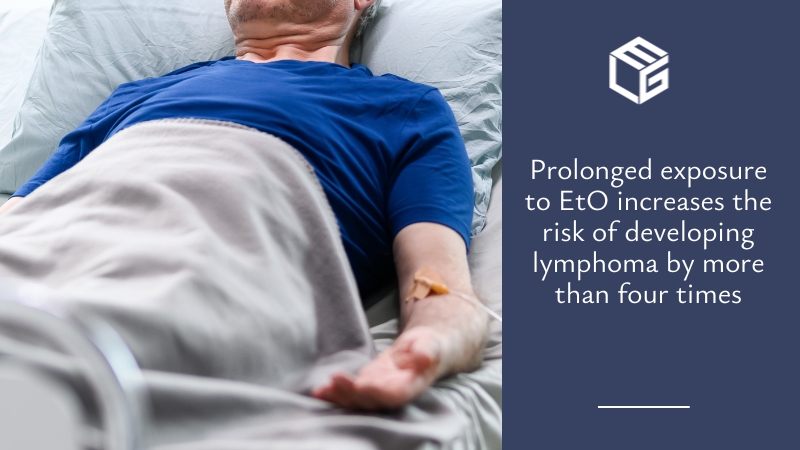Studies have shown that EtO exposure may cause the development of lymphoma
Several industries use ethylene oxide (EtO) in their processes. It’s mostly used as a pesticide and as a sterilizing agent. While it may be useful to businesses, EtO is actually categorized as a Group 1 human carcinogen by the IARC, EPA, and CDC.
A comprehensive paper published in 2023 has found that exposure to pesticides, including EtO, may increase the risks of developing non-Hodgkin’s lymphoma.
In another study, high exposure to EtO has been seen to elevate the likelihood of developing lymphoma by more than four times.
Workers and residents near EtO-emitting facilities have the highest chances of exposure, which may lead to the development of NHL. Listed below are the most common signs and symptoms of NHL:
- Swelling of lymph nodes, specifically in the neck, armpits, or groin
- Pain in the abdomen or bloating
- Chest pain or trouble breathing
- Fever and night sweats
- Weight loss
NHLs are generally classified as either B-cell or T-cell and are either indolent or aggressive. While there are over 70 kinds of NHL, the following are the most common NHL diagnoses:
- Angioimmunoblastic T-cell lymphoma (AITL)
- Burkitt lymphoma
- Cutaneous T-cell lymphoma
- Diffuse Large B-cell lymphoma (DLBCL)
- Follicular lymphoma
- Hepatosplenic gamma/delta T-cell lymphoma
- Lymphoblastic lymphoma
- Mantle cell lymphoma
- Marginal zone lymphoma
- Peripheral T-cell lymphoma (PTCL)
- Small lymphocytic lymphoma (SLL)
- Systemic anaplastic large cell lymphoma (ALCL)
- Waldenström macroglobulinemia (lymphoplasmacytic lymphoma)
Because of the many NHL types, it would be best to confirm with your respective physician whether or not your lymphoma diagnosis falls under the NHL group. If your doctor provides you with any type of NHL diagnosis that you suspect is due to EtO exposure, know that you may be entitled to legal compensation.
